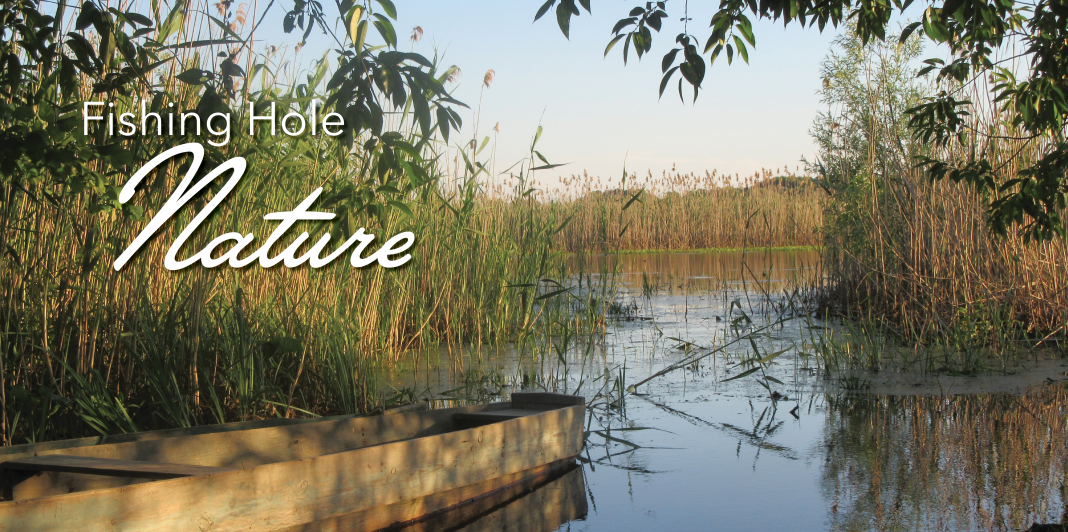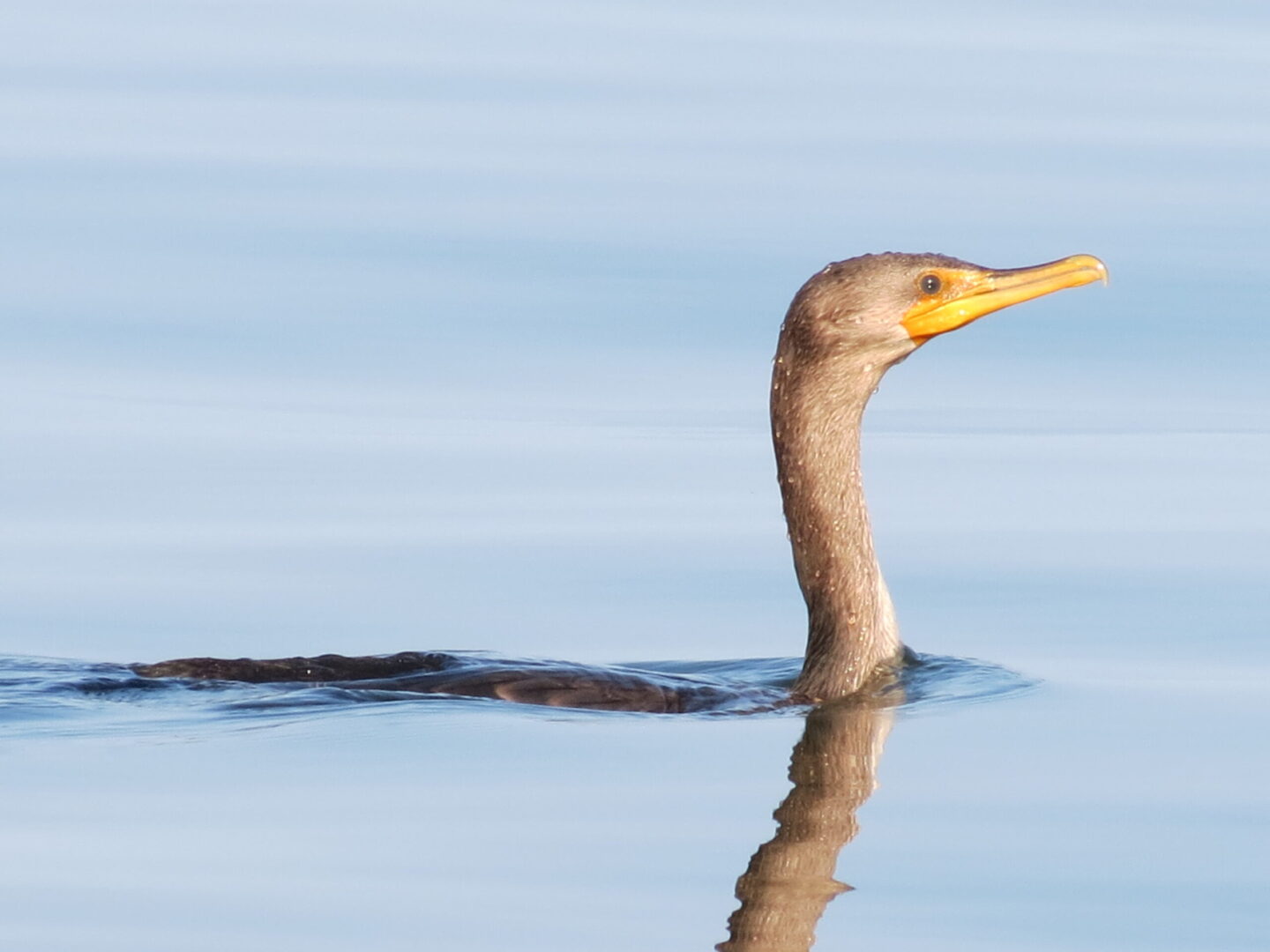Where there are fish, there are cormorants. Cormorants are here all year long, but thousands more migrate down and gather in our Texas lakes and rivers during the winter months.
These birds are a paradox – daffy but skillful, ungainly yet graceful, scorned and respected. They are about 5 lbs in weight, 2-1/2’ from head to tail, mostly brown to black in coloring, and they have a lightly serrated bill with a sharp hook on the end which helps them hold onto their catch. Although this bird is not in the duck family, it has big, black, floppy, webbed feet. When they paddle low in the water, the only thing you may see is their long snake-like neck and head. But look closer and you will notice their beautiful bright turquoise eyes!
Flight is not always easy for these fellows. They sink into the water and tend to flap hard to get their chubby bodies up into the air. They often fly low near the water surface to get lift, and it is not unusual to watch one make several flapping wet attempts to take off before it can actually fly into the air. But underwater these cormorants are simply amazing! Some birds, like osprey and eagles, plunge-dive into the water to catch fish near the surface. Others, like white pelicans, paddle along the surface, open their mouths and let their meals swim in. But cormorants do elegant surface dives and skillfully chase their prey in deep water. They can stay under for about a minute, darting down 20+/- feet to catch fast dodging fish! Consider going to youtube.com and searching for videos with the words “underwater cormorant”. These free diving birds are delightful to watch!
In China the fishermen raise and tame cormorants to fish for them. No worms, no hooks, and no fishing without catching! Fishermen tie loose nooses around their birds’ necks, and put them into the water to fetch fish for them! The birds pop back up to the surface with fish in their mouths, but the nooses prevent them from swallowing. They hop onto perches that the fishermen offer, come back into the boats and are coaxed to give up their catch. Then the cormorants are sent back into the water to do it all over again! Baskets fill up with fish very fast, and without fail.
In the States our cormorants are not so popular. Many sports fishermen do not like these birds. They believe that cormorants eat too many sport fish, leaving fewer fish for fishermen. Many lakeside home owners don’t like them either because these birds foul their trees and docks, and leave smelly messes in their yards. However, cormorants are protected by the Migratory Bird Treaty Act which makes it illegal for people to harass, possess or harm them, or their nests and eggs.
Learn more about the incredible nature in our area by joining a chapter of the Texas Master Naturalist organization. To find a chapter close to you, or to read about the state program, go online to www.txmn.org. Volunteer and get involved!
Photo Descriptions
- Cormorants – ungainly yet graceful, daffy but skillful, despised and respected.
- This handsome cormorant shows bright turquoise eyes, a lightly serrated hooked bill, and big floppy black feet.
- Because they hunt underwater, their feathers do not repel water like duck feathers. Cormorants have less preening oil and must continually dry out their wings.
- Typically, cormorants ride low in the water but showing their snake like necks and heads.
- In winter cormorants develop ‘bird rafts’ to hunt for fish, and they make grunting sounds much like pigs! In summer their numbers are far fewer, and they tend to be quiet solo hunters.
- The boys are back in town! When not in the water they hang out on docks, roofs, railings, and neighborhood trees, and they can make quite a nasty mess!

















